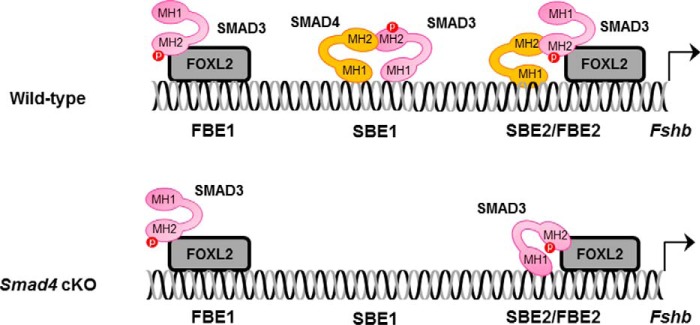FIGURE 1.
Models of SMAD signaling to the Fshb promoter in murine gonadotrope cells of wild-type and Smad4 knock-out mice. Top panel, in wild-type mice, activins stimulate the formation of complexes of SMAD proteins and FOXL2, which act via at least three cis-elements in the proximal Fshb promoter. SMADs can bind DNA via SBEs, and FOXL2 binds via FBEs. FOXL2 binds the distal FBE1 site and recruits SMAD3 via protein-protein interaction. Complexes of SMAD3 and SMAD4 can bind SBE1, which contains binding sites for both proteins. More proximally, SMAD4 binds SBE2, FOXL2 binds FBE2, and the two proteins are linked through their mutual association with SMAD3. Bottom panel, in mice lacking SMAD4 in their gonadotropes (cKO), SMAD3/SMAD4 binding to SBE1 is lost. However, SMAD3/FOXL2 binding to FBE1 is intact. In the absence of SMAD4, SMAD3 can bind SBE2, enabling activins to stimulate Fshb production, although at reduced levels relative to wild type. MH1, DNA binding domain; MH2, protein-protein interaction domain.

